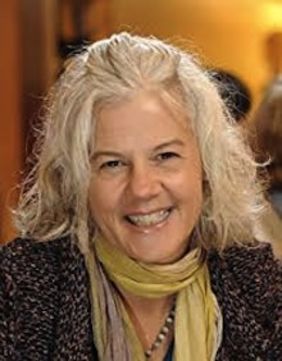In her best-selling book Dopesick: Dealers, Doctors, and the Drug Company That Addicted America (2018), the journalist Beth Macy explores the opioid epidemic that has devastated many towns and families in America. The book has been on numerous "best of" lists for 2018. This interview comes from the Los Angeles Review of Books (October 6, 2018), and is used by permission. For more on this theme, see my review of the movie Heroin(e).
Travis Lupick is a Vancouver journalist and the author of Fighting for Space: How a Group of Drug Users Transformed One City's Struggle with Addiction (2018).
TRAVIS LUPICK: In Dopesick, you recount the role that pharmaceutical companies played in the United States’s opioid epidemic, but you also suggest that the decline of factory work was a significant factor. Can you explain how economic hardship in Appalachia relates to the problem of over-prescribing?
BETH MACY: What really made me understand how those issues are so entwined was the story of a woman in the coal fields. She had lost her job and had had gallbladder surgery. And she became addicted because she was over-prescribed. She was told, even the in middle of the night, to get up and take Percocets for the pain. And, at the end, by the time nobody wanted to prescribe to her anymore, she realized that her neighbor, who had just lost her job when a textile plant closed, had some ailment and could probably talk her doctor into giving her OxyContin. She could then sell them to her. So the woman who had surgery was now taking OxyContin to stave off dope sickness, while the older woman who had lost her job in the textile plant now had money to buy her blood pressure medicine and pay her rent.
That sort of thing happened a thousand times in these distressed areas where there had been a lot of workplace injuries and people were already taking opioids. Pharmaceutical reps for Purdue Pharma really focused a lot of their marketing efforts on those areas.
 |
|
Beth Macy.
|
Is it possible, because the economic decline of these areas has so many people in such a state of pain, that some other enterprising dealer other than the pharmaceutical companies would have moved in to capitalize on that pain?
That could be. But we have the facts that we have, and it was Purdue Pharma that came in with this new drug that was heralded as being addictive in less than one percent of cases, which we now know is bunk. And the FDA allowed them to make the squishy claim that, because of a time-release mechanism, OxyContin was believed to reduce liability of abuse. And right away, in these distressed regions, the cops started noticing the drug being diverted and sold on the streets.
While it tells a larger story of how the United States’s opioid epidemic developed, Dopesick is also simply the story of a small group of recent high school graduates who form a loose gang of friends via dealers and drug circles, and who find themselves struggling with increasingly problematic addictions. The way that narrative takes shape, was that intentional or organic? Was there something specific you were trying to say by focusing on that one small group?
I had been covering these two families that came out of Hidden Valley, which is a wealthy suburb outside of Roanoke, Virginia, where I’ve been a reporter for 30 years now. I had been following these two families, and after I wrote a series in 2012 that ran on the front page of the paper three days in a row, readers sort of spit out their coffee and said: “What? Holy crap. Wealthy white people are using heroin?” And so, later, when I decided this was going to be my third book, I had these relationships that I’d already made.
I’ve kept in touch with the mothers, and I even continued to keep in touch with Spencer Mumpower after he went to prison. And then I went back to the prosecutors, and that’s when I learned about the Ronnie Jones case, just up the valley a few hours. When I took that story and added it to the story I’d been following of this single cell of Hidden Valley users, and then traced it all back to the beginnings of OxyContin landing in the coal fields (which also has a big local tie because it was the Roanoke US attorney’s office that was responsible for the investigation that led to the Purdue Pharma plea agreement in 2007), I had what I thought was a story of three Virginia communities. But, really, it was a microcosm of what has happened in America.
You obviously grew very close to some of the subjects of your book. You write about how there were moments when journalistic objectivity was lost. How did you wrestle with that? How did that change the story you told? I wonder if it made for a better story.
It probably made for a better story. I think you always have a better story when you go right up to that ethical line. Otherwise, you’re not getting close enough. Walt Harrington, who’s one of my favorites of all time — he used to write features for the Washington Post and is a professor now — he said, “If you’re not sweating at night about what to include and what not to include, you haven’t gotten close enough.”
To continue reading, click here.


